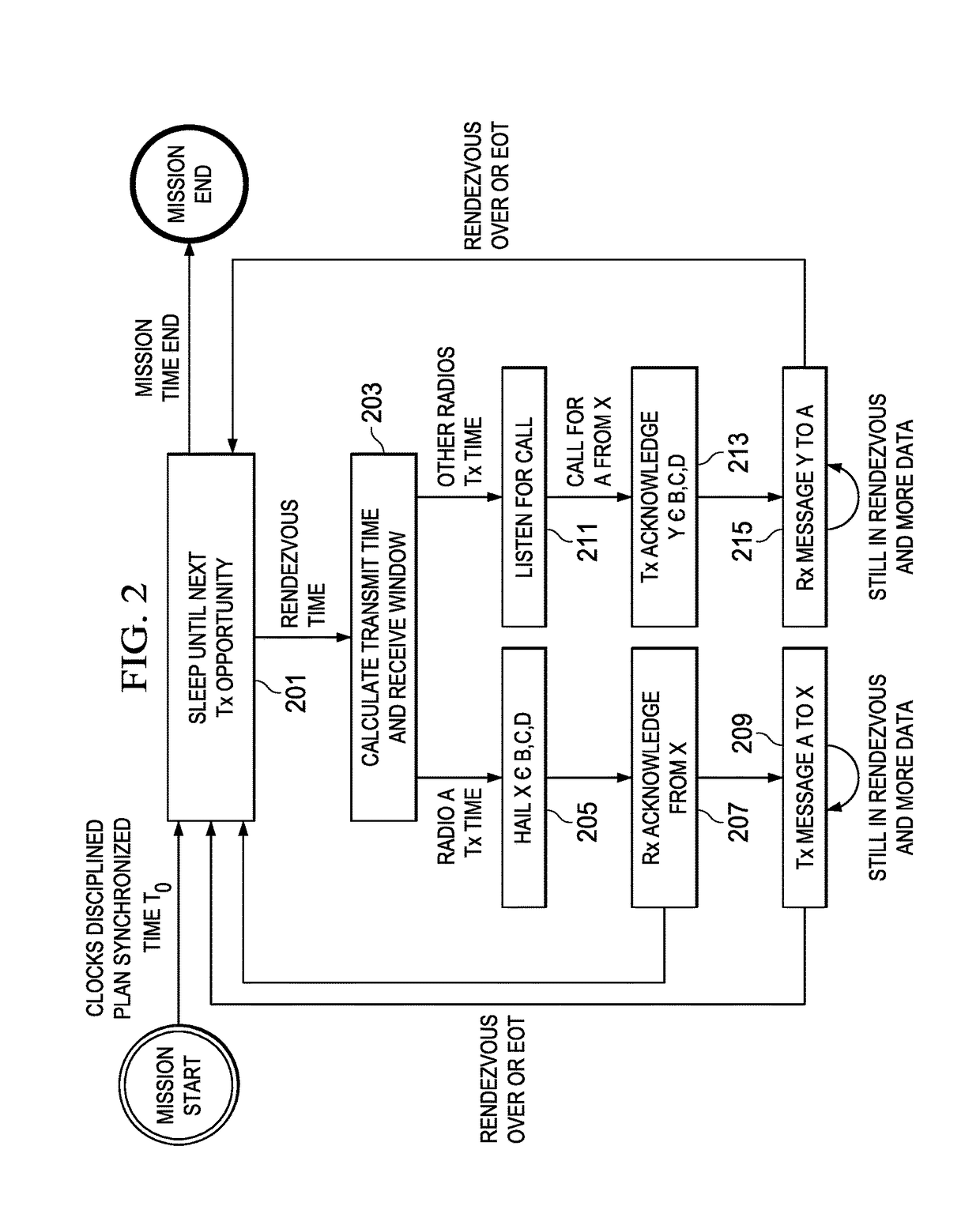Media Access Control Method With Time-Coherence and Deterministic Scheduling for Wireless Communications Network
a technology of time-coherence and deterministic scheduling, applied in the field of wireless communications systems, can solve the problems of large footprint, large power consumption, and large footprint of the on-board clock used to achieve time-synchronized media access
- Summary
- Abstract
- Description
- Claims
- Application Information
AI Technical Summary
Benefits of technology
Problems solved by technology
Method used
Image
Examples
Embodiment Construction
[0009]Overview
[0010]The following description is directed to a media access control method, used within a wireless data communications network. The method reduces the need for strict synchronization between the network nodes (“radios”), which reduces the amount of over-the-air energy transmitted. This in turn, reduces the power consumption of the radios, as well as the likelihood of interception or detection of the transmissions.
[0011]More specifically, the method provides each radio with an accurate sense of time and a common schedule of transmit opportunities. Each radio transmits its data communications signal in such a way that it will arrive at the receiving radio when expected. The radio waveforms are time-coherent, which means that they are not dependent on over-the-air transmission of synchronization signals. At appropriate times, the radio electronics can be powered off, further reducing the radio's energy needs.
[0012]For purposes of example, this description is written in ...
PUM
 Login to View More
Login to View More Abstract
Description
Claims
Application Information
 Login to View More
Login to View More - R&D
- Intellectual Property
- Life Sciences
- Materials
- Tech Scout
- Unparalleled Data Quality
- Higher Quality Content
- 60% Fewer Hallucinations
Browse by: Latest US Patents, China's latest patents, Technical Efficacy Thesaurus, Application Domain, Technology Topic, Popular Technical Reports.
© 2025 PatSnap. All rights reserved.Legal|Privacy policy|Modern Slavery Act Transparency Statement|Sitemap|About US| Contact US: help@patsnap.com



